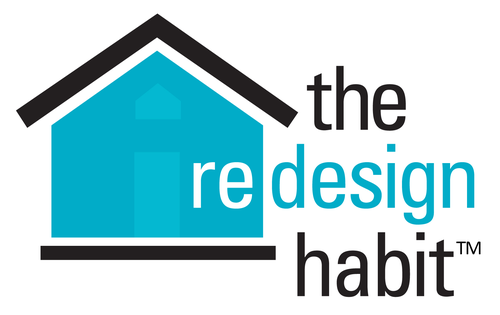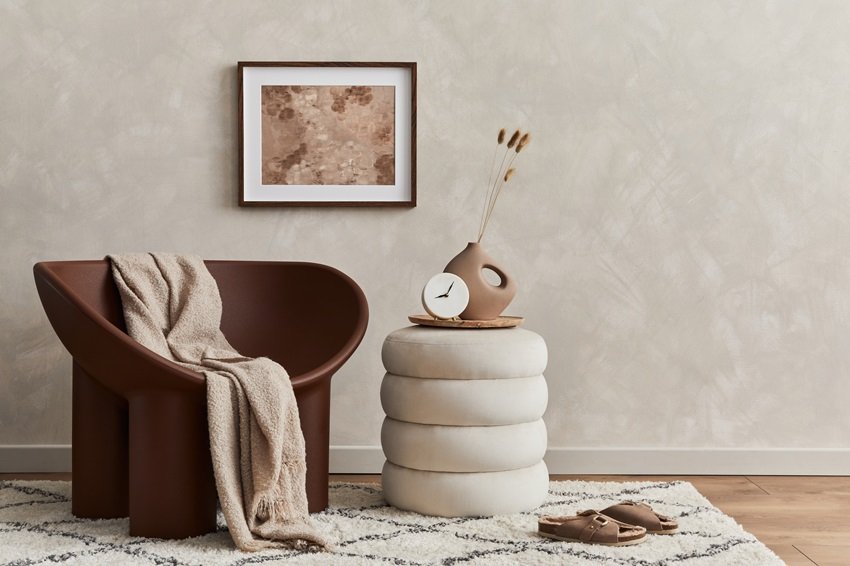Ways to Beautify Your Home with Pattern and Texture
Honest answer: When you think of ways to beautify your home, do pattern and texture come to mind? Based on my experience, “P&T” are far down the list of ways to spiff up a space –below basics like color and light and style and furnishing and flooring and window treatments and a few others, if they make the list at all. If you’re guilty of overlooking P&T, you’re in good company. While P&T may eventually work their way into the redesign of your home, they often are overlooked as important strategic choices. In this blog I aim to elevate P&T to the TOP of your thinking. They can be great tools to help you love where you live®.
Pattern and Texture Defined
Pattern refers to repetitive designs or motifs that can range from simple, like stripes, to complex, like florals or sophisticated geometric shapes. Patterns can be found on wallpapers, fabrics, rugs, and even furniture. They add visual interest and can greatly impact the mood within a room.
Texture refers to the surface quality of a material—how it looks and feels. Textures can be smooth, rough, glossy, matte, soft, hard and any other physical attribute you can imagine. Examples include the sleekness of leather, the roughness of brick, the softness of silk, and the transparency of glass. Incorporating various textures can add tactile interest and depth to a room.
Tips for Blending Patterns in Your Home
Choose a Color Scheme: Having a unified color scheme can help disparate patterns work together harmoniously. Choose two or three main colors and ensure that all your patterns include at least one of these colors.
Balance Bold and Subtle Patterns: Mix bold, eye-catching patterns with more subtle ones to avoid overwhelming the space. For example, a vibrant floral wallpaper can be balanced with understated striped cushions or a solid-colored rug.
Play with Scale: Combine patterns of different scales to create visual interest. You might pair a large-scale floral print with a small-scale geometric pattern, or a broad stripe with a delicate polka dot.
Use Patterns as Accents: If you're hesitant to go all-in with patterns, start small. Use patterned throw pillows, rugs, or curtains as accents against solid-colored furniture and walls.
Tips for Blending Textures in Your Home
Start with a Neutral Base: Begin with a neutral color palette as your foundation. This creates a calming backdrop that allows different textures to stand out without overwhelming the space. Neutral colors like white, beige, gray, or taupe work well as a base.
Layer Textures: Think of layering textures as you would layer clothing. Combine soft and hard textures to create contrast and balance. For instance, pair a plush velour sofa with a sleek metal coffee table, or a rustic wooden dining table with modern plastic chairs.
Vary the Scale: Mix large, bold textures with smaller, more subtle ones. For example, a large, chunky knit throw can be paired with a smooth, sleek leather chair. This variation in scale keeps the eye moving and adds interest.
Incorporate Natural Elements: Natural textures like wood, stone, and plants bring warmth and organic beauty to a space. You might consider a jute rug, a wooden accent wall, or a collection of potted plants to introduce these elements.
Pattern and Texture Examples for Your Home
Living Room Pattern Example: Combine a velvet sofa (soft texture) with a metal coffee table (hard texture). Add a patterned rug that ties in with the color of the sofa and some patterned throw pillows that incorporate the colors from the rug.
Bedroom Pattern Example: Layer a linen duvet cover (natural, soft texture) with a chunky knit blanket (coarse texture) and a silk throw pillow (smooth texture). Use a mix of patterned and solid pillowcases to add depth.
Dining Room Pattern Example: Pair an oak dining table (natural, hard texture) with upholstered chairs (soft texture). Add a patterned table runner and placemats that complement the chair upholstery.
By thoughtfully combining different textures and patterns, you can create a space that feels rich, layered, and uniquely yours. Remember, the key is to experiment and find a balance that feels right to you. Happy designing!
Now, what will you do next to love where you live?
Please feel free to reach out to us at The Redesign Habit and ask questions or simply share a project that you are working on or have completed.
For more great stories and ideas please follow us on Facebook and Instagram.





